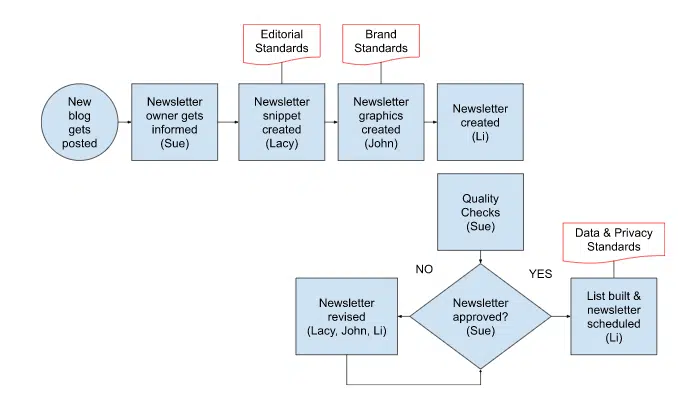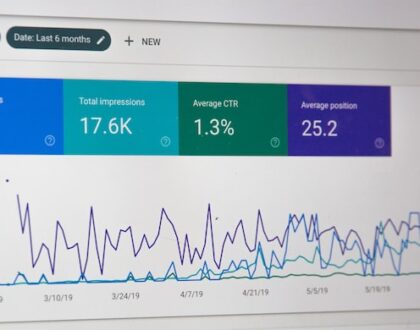How Artificial Intelligence Will Alter Marketing Processes

by editor
This article will go into more detail about workflows and look at how AI, and more especially visual workflow builders, will change how marketing teams work.
From experts to techies who are creative
A lot of marketing companies depend on experts. In a smaller business, one person may be in charge of all digital marketing. In a bigger business, social media, SEO, and email marketing are usually handled by different people.
A bigger company might even specialize even more, telling the difference between paid and organic social media, or they might even have experts for each social media outlet. As AI helps with creating and distributing content from start to finish, these jobs will merge into a single “creative technologist” role. This will be the biggest change in marketing.
Most likely, the merging of jobs will happen in the same way that technology has. Different pieces of software usually handle different parts of the marketing pipeline these days. But in the near future, software solutions will work together to make bigger ones.
One system will do everything instead of having one for making newsletters, another for making pictures, and a third for putting them all together. This will be possible as AI solutions like ChatGPT 5 get better. It can combine Sora (video), voice, DALL-E (image), search, and vision in any input combination and make any output combo of text, audio, and image.
As new technologies come out, it will be very tempting to buy and use the newest AI software. But be careful, buyer. It’s easy to shop. Marketers who put in new tools without thinking about the people and the process will almost certainly learn some hard lessons along the way.
You should also think about workflows. These days, marketing processes include more than just creation and deployment. They also include quality checks, aligning stakeholders, and revisions. With generative AI helping to make and use marketing materials, marketers need to think about the whole process to make sure quality and consistency are kept.
Looking at how AI affects processes
Process mapping, a method that shows each step of a process, is one way to figure out the effect. To understand how process mapping works, picture it as a GPS that tells you where to go and what to do at each stop along the way.
For example, let’s say you want to turn a new blog post into an email blurb and send it out. This non-automated method could be shown on a process map like this:

Take note of how different people help plan, write, edit, and send out the email. Each is very important for getting this marketing item to the customer.
Also, look at the steps that are harder to see. For instance, Lacy and John know the rules for editing and brand standards and make sure they are followed. Sue is also aware of the brand standards and checks them one last time. These are the kinds of steps that process mapping can show you, and you need to think about them when you use AI solutions.
Moving toward more automation: little or no code
Lots of marketers already use automated email systems and other tools that set off a number of actions, like a drip campaign, to make parts of their marketing process more efficient.
In most cases, people who use these systems create the flow using a visual (or “no code”) interface. More complex integrations are set up by people with “low code” skills. Li is the most technically-savvy person in the group. He or she is in charge of the data and the launch of the email automation system. He might know enough basic writing (low code) to set up the system and maybe talk to his IT coworkers who are more technical. If you want to use advanced graphic editing tools like John does, you don’t need any code to do it (“no code”).
Creative technologists will use AI to work with both no-code and low-code environments to make more of the marketing process automatic. Visual workflow makers give marketers more power by letting them connect different systems visually, without having to write any code. Here’s an example of how a marketer could set up an automated process to not only be notified when a new blog post comes out, but also to summarize the post into social posts, make images, and share the posts and images on different social networks. Visual workflow builders give marketers the freedom to make their own unique workflow cases.
Take note of how weak the quality checks and brand standards are in that case. To get around this, some automations post the ChatGPT data into a pre-formatted spreadsheet that already has an approval column. When the word “Approve” is clicked in the spreadsheet box, the next step in the automation process starts. Marketers need to keep an eye on the brand and voice standards that ChatGPT has been taught.
Keep in mind that things like aligning stakeholders and making sure the quality is good are not part of the software and still need to be handled by people.
How AI processes will change jobs in marketing
If you look at the above workflows before and after AI, you can see how it changes the marketing pipeline and, by extension, the marketing jobs. Marketers no longer start from scratch when they make art, copy, or ads. Instead, they make prompts and automations. People who are good at prompting can use their imagination to make more and better assets on a large scale.
Graphic artists who are good at what they do can spend less time making banner ads and more time coming up with images that focus on people and customers. Expert writers don’t have to worry about turning blogs into email blurbs; instead, they can focus on telling emotional stories that connect with their customers. Because everyone will sound the same if they use AI to write.
Automations, which go beyond “no code,” are more advanced, low-code ways to get marketing work from the person who makes it to the person who buys it. Somehow, just maybe, managers will be able to get past the stress and help the company make more money.
People in charge of marketing need to learn how to use each person’s skills in new ways and find ways to boost growth instead of just cutting jobs. Talk to marketers about work goals as a coach to help people make the connections between their old jobs and their new ones. Follow the lead of companies like J.P. Morgan Chase, where rapid engineering is taught to all new employees and many current employees as well.
As work flows change, so will roles.
As AI gets smarter, the one-use tools we have now will merge into complex, end-to-end marketing pipeline delivery systems, which will change both jobs and processes. To avoid this, marketers can use tools like process mapping to understand their present workflows and see what parts of the work are both generative and non-generative.
This will help them move toward automations that follow current rules, quality checks, and safety nets, and it will also keep them from having unexpected effects. Roles will change as processes do, but people who can solve problems in creative ways, use data and technology, and are open to new ways of doing things will be in high demand in the future.
Recommended Posts

Can Attentiveness Actually Drive Campaign Success?
November 8, 2024

Marketers Must Create Time for Time Management
October 25, 2024

Maximizing Revenue Growth Through Sales and Marketing Alignment
October 11, 2024
